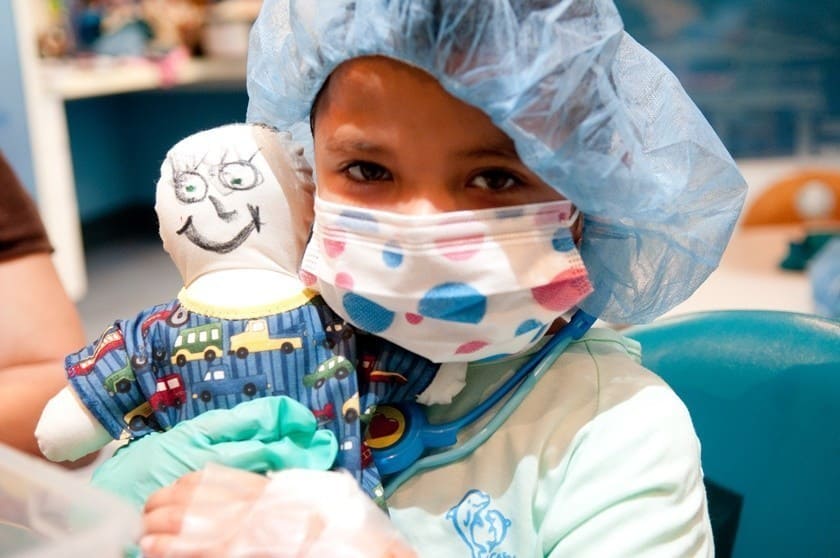Pediatric Cardiology: Immediately after birth, screening assessments of the newborn are recommended in the following months, which include cardiological evaluation. Also, as the child grows up and becomes a sport, parents are told that it is good for the child to be evaluated by the cardiologist to practice the sport safely.
It is important for parents to understand why this cardiological evaluation is necessary and what it entails. Does it bring complete information about the baby’s heart? Is it difficult to perform? Find out the details in the material below, structured in the form of an interview, using the questions I often get.

1. Why do we need to evaluate children/infants from a cardiological point of view?
Heart diseases present in children most often occur from birth from the process of heart formation and are called congenital heart malformations. This is why they can be diagnosed immediately after birth or in the first months of life. The earlier the diagnosis of heart malformation is made, a follow-up treatment plan can be made to ensure the child’s normal development. Some more complex heart malformations have indications of interventions sometimes even in an emergency, others are only tracked over time. The important thing is that heart disease is known to determine the best treatment and level of effort that can be practiced by that child.
2. Aside from congenital heart disease, are there other childhood heart diseases?
There are other heart diseases in the child, such as arrhythmias, such as heart failure after viral infections, or various metabolic diseases, but these are rarer and generally give clear symptoms.
3. Is it possible the baby has a heart condition and no symptoms at all?
Yes, this is possible in simpler congenital malformations such as atrial septal defect, ventricular septal defect, and persistent arterial canal. In complex heart malformations, symptoms generally appear: The infant does not grow, may have cyanosis (blue skin), gets tired when sucking and later gets tired when exercising, may have fainting, etc.
4. What is a Cardiology Screening for Children? Does that hurt?
Cardiac assessment is not painful at all. It includes a clinical examination with palpation of the pulse, listening in on the heart and lungs with a stethoscope, and measuring blood pressure. Then an electrocardiogram (usually in older children) is performed, where the heart rate is observed, by placing a hollow on the breast and limbs. It is not painful, it only involves a state of stillbirth for a few seconds that infants and young children have a hard time keeping.
The doctor then performs echocardiography, which involves the actual visualization of the heart on a screen by placing a gel probe on the chest surface. This is how the chambers of the heart are observed, the function of contraction, valves, and walls of the heart is appreciated. Through echocardiography, heart malformations are effectively diagnosed.
In children and infants, evaluation can sometimes be difficult, especially between 9 months and 3 years of age, children at this age are difficult to sit still, but with patience can be evaluated in the arms of their parents by being distracted by music, videos. It is preferable that at this age both parents are present in consultation to achieve a quiet evaluation. For infants and neonates, it is recommended to come after meals and with a soother of help, that the baby accepts.
5. Can cardiological evaluation be done at any age?
Yes, it can be performed at any age.
6. Do cardiac ultrasound or ECG have any adverse or dangerous effects?
No, they’re non-irradiating investigations, with no risks or adverse reactions. They can be repeated as often as necessary.
7. What is systolic murmur? Does every child have it?
The systolic murmur is a sound that the heart causes and that the doctor hears with the stethoscope placed in the right heart. The systolic breath can be innocent or functional when the normal heart activity is actually heard because the chest of children has a thin wall.It is present in almost all children and does not worry at all. The systolic murmur is not a disease, it is just a clinical sign. It can be said, however, that it is a breath without any particular meaning only after performing echocardiography that excludes the presence of a heart defect. That is why all children with systolic breath, especially if it is more intense or new, should undergo a heart ultrasound.
7. Is the cardiological evaluation of children who practice sports important?
It is preferable that children who start practicing a performance sport (with more than 3-4 workouts per week) should be evaluated by the cardiologist by performing the clinical, ECG examination of a cardiac ultrasound (It is enough to be performed only once to exclude heart malformations and then only in case of symptoms or changes on the ECG).
ECG is then performed annually in athletes (it is currently required as standard) because there are certain diseases (such as hypertrophic cardiomyopathy) that can occur during childhood and is a disease at risk of stress complications. Therefore, if changes are observed on the ECG annually, refer the patient again for a cardiac ultrasound.
In conclusion, the cardiological evaluation is easy to perform, risk-free, painless, and brings valuable information, essential for a normal life. It should be done at least once after birth, even in the absence of any symptoms.


